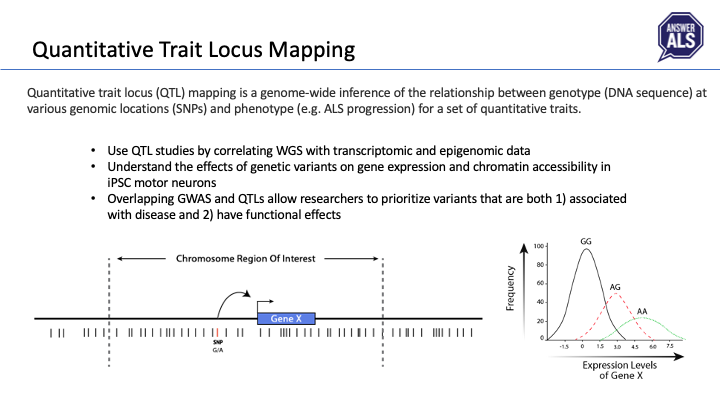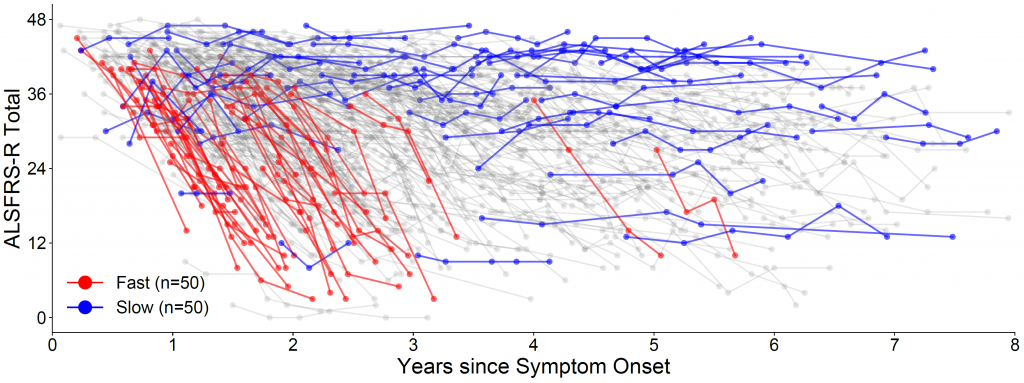How Are Researchers Using Answer Data?
Below we provide examples of how researchers are integrating clinical, genomic, transcriptomic, and proteomic data to gain a more comprehensive understanding of the underlying biological mechanisms of ALS. By combining information from the genome, transcriptome, and proteome, researchers can develop new hypotheses, identify novel therapeutic targets, and advance our understanding of this devastating disease.
Example 1

Quantitative traits cannot be explained by the genetic segregation of a single gene and are thought to be the result of several genetic variants in the genome influencing a phenotypic trait such as progression of the ALS phenotype.
This is a high- level overview of how some of the Answer ALS labs are using this data. By combining the whole genome sequencing data with transcriptomic and epigenomic data, the researchers are looking for traits that cannot be explained by the genetic segregation of a single gene and are thought to be the result of several genetic variants in the genome influencing a phenotypic trait such as progression of the ALS phenotype. This methodology, called quantitative trait locus (QTL) mapping, looks at the genome-wide inference of the relationship between genotype (DNA sequence) at various genomic locations (SNPs) and phenotype (e.g. ALS progression) for a set of quantitative traits. Several of these traits together might compound with each other and create a distinct subtype phenotype. In the example above, if a person is homozygous G at this location near gene X, the gene X expression levels might be high. If they are hetrozygous G/A they might have medium expression levels and if they are homozygous A they have lower or no expression of gene X. Correlating these types of events with a phenotype could help researchers identify ALS subtypes.
Example 2

The paper “Identifying Patterns of ALS Progression from Sparse Longitudinal Data” by Ramamoorthy D. et al., describes ways to understand the progression of ALS over time. The researchers analyzed data collected over time from patients with ALS and used statistical methods to identify patterns in the data. The authors found that, even with limited data, they could identify meaningful patterns in the progression of the disease. This research helps to improve our understanding of ALS and could lead to better ways of diagnosing and treating the disease.